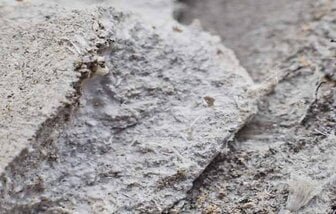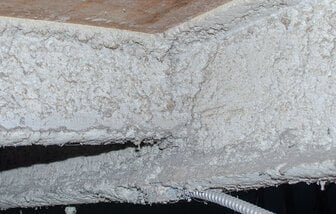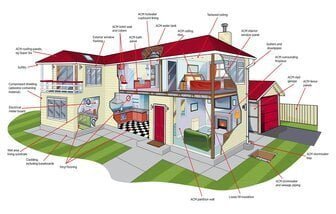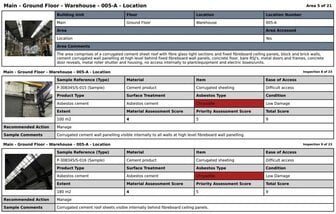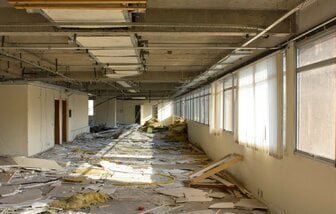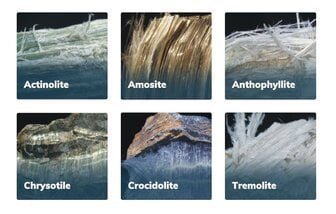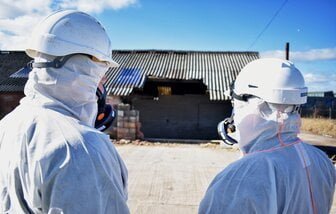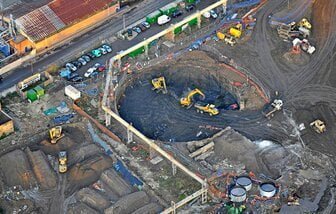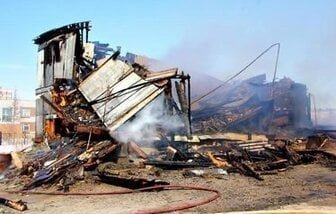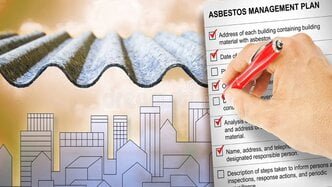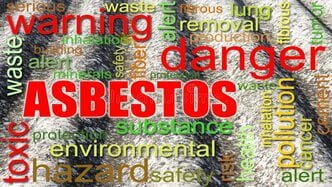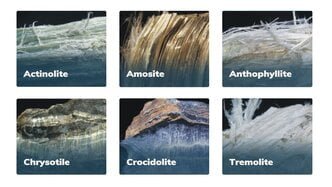Managing Asbestos in demolition
Dealing with asbestos requires caution and adherence to proper safety procedures. Identifying asbestos and taking appropriate action is crucial to protect the health and well-being of individuals. If you suspect the presence of asbestos, it is essential to consult with a licensed asbestos professional and follow their guidance to ensure a safe and effective resolution.
Managing Asbestos in the home & demolition overview
Learn about the essential steps to ensure the proper management of asbestos during demolition projects. Conduct a thorough survey, develop an asbestos management plan, engage a licensed asbestos removal contractor, properly dispose of asbestos waste, and conduct post-demolition clearance inspections.
Consult with asbestos professionals and follow established guidelines to protect the health and safety of workers and the general public.
Asbestos is a naturally occurring mineral that was widely used in construction materials for its heat resistance and durability. However, it is now known to be highly hazardous to human health, causing serious respiratory diseases including lung cancer and mesothelioma.
Due to its widespread use in the past, it is important for property owners and managers to be aware of how to properly manage asbestos to protect the health and safety of occupants and workers.
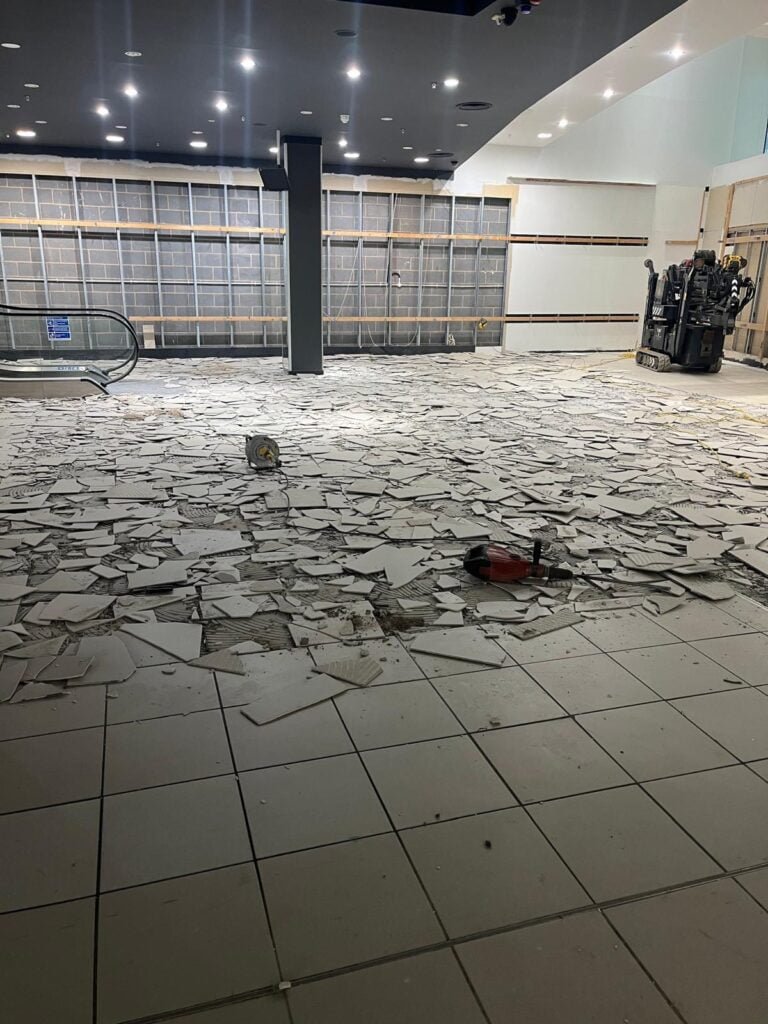
Identifying Asbestos
Identifying asbestos can be challenging, as it is often mixed with other materials. However, there are some common areas where asbestos is commonly found:
- Insulation materials, such as pipe insulation and boiler insulation.
- Roofing materials, including shingles and cement sheets.
- Textured coatings, such as popcorn ceilings and textured paint.
- Vinyl floor tiles and adhesives.
- Asbestos cement products, such as pipes and corrugated sheets.
If you suspect that a material contains asbestos, it is essential to have it tested by a licensed asbestos professional. They will take a sample and send it to a laboratory for analysis. It is crucial not to disturb the material until you have confirmation of its asbestos content.
Dealing with Asbestos
When dealing with asbestos, it is important to follow proper safety precautions to minimize the risk of exposure. Here are some key steps to take:
1. Assess the situation
Determine the extent of asbestos presence and the condition of the material. If the material is in good condition and undisturbed, it may be safer to leave it in place and monitor it regularly.
2. Hiring a licensed professional
For any asbestos removal or repair work, it is crucial to hire a licensed asbestos professional. They have the necessary training and equipment to handle asbestos safely. Attempting to remove asbestos yourself can release dangerous fibers into the air and put you at risk.
3. Creating a containment area
If asbestos needs to be removed, a containment area should be established to prevent the spread of fibers to other areas. This may involve sealing off the work area with plastic sheeting and using negative air pressure machines to ensure that any released fibers are captured and filtered.
4. Wearing protective gear
When working with asbestos, it is crucial to wear appropriate protective gear, including disposable coveralls, gloves, goggles, and a respirator equipped with a high-efficiency particulate air (HEPA) filter. This helps to prevent the inhalation or ingestion of asbestos fibers.
5. Proper disposal
Asbestos waste must be disposed of in accordance with local regulations. It should be double-bagged in heavy-duty plastic bags labeled as asbestos waste and taken to an approved disposal facility.
Step 1: Conduct a thorough survey
Prior to commencing any demolition work, it is essential to conduct a thorough survey of the building to identify any potential ACMs. This survey should be carried out by a qualified asbestos professional who will inspect all areas of the building, including hidden spaces such as wall cavities and ceiling voids.
The survey will involve taking samples of suspected materials and sending them to a certified laboratory for analysis. Once the presence of asbestos is confirmed, a detailed report should be prepared, outlining the location, condition, and type of ACMs present in the building.
Step 2: Develop an asbestos management plan
Based on the findings of the survey, an asbestos management plan should be developed. This plan will outline the procedures and precautions to be followed during the demolition process to ensure the safe handling and removal of ACMs.
The plan should include details such as the sequence of demolition, the use of appropriate personal protective equipment (PPE), and the methods for handling and disposing of asbestos waste. It is crucial to comply with all relevant local, state, and federal regulations regarding asbestos management.
Step 3: Engage a licensed asbestos removal contractor
When it comes to the actual removal of ACMs, it is essential to engage a licensed asbestos removal contractor. These professionals have the necessary training and expertise to handle asbestos safely and are equipped with specialized tools and equipment.
The removal contractor will follow the asbestos management plan and employ appropriate containment measures to prevent the release of asbestos fibers into the air. They will use techniques such as wetting down the materials and using negative air pressure units to ensure the safe removal of ACMs.
Step 4: Proper disposal of asbestos waste
Once the ACMs have been removed, it is crucial to dispose of them properly. Asbestos waste should never be disposed of in regular trash bins or landfills, as this can pose a significant health risk to the public and the environment.
Instead, the asbestos waste should be double-bagged in heavy-duty plastic bags labeled with appropriate warning signs. It should then be transported to a licensed asbestos disposal facility, where it will be safely disposed of in accordance with regulations and guidelines.
Step 5: Post-demolition clearance inspection
After the demolition work is complete, a post-demolition clearance inspection should be conducted. This inspection involves a thorough visual examination and air monitoring to ensure that all asbestos-containing materials have been effectively removed.
If any traces of asbestos are found during the inspection, additional remediation work may be required. It is essential to address any remaining ACMs before the site can be deemed safe for future use or redevelopment.
Conclusion
Managing asbestos in demolition projects requires careful planning, adherence to regulations, and the involvement of qualified professionals. By conducting a thorough survey, developing an asbestos management plan, engaging licensed removal contractors, properly disposing of asbestos waste, and conducting post-demolition clearance inspections, you can ensure the safe and effective management of asbestos during demolition.
Remember, asbestos is a hazardous material, and its mishandling can have severe consequences. It is always best to consult with asbestos professionals and follow established guidelines to protect the health and safety of workers and the general public.
Asbestos Millboard
Millboards manufactured between 1896 and 1965 can contain chrysotile asbestos (up to 97%). Often found in: Pipe runs, electrical gear, vaults, storage. Often used for: Fire protection on structural
Asbestos Cement
Generally containing 10-15% asbestos fibres which are bound in Portland cement or calcium silicate. Uncoated sheets, widely used in the past as a building material can be identified as light grey in
Asbestos Sprayed Coatings
Asbestos sprayed coatings have been widely used in the construction industry in the past, particularly in the United Kingdom
Asbestos Tiles
Learn about asbestos floor tiles in the UK, including their identification, dangers, and management. Find out how to identify asbestos floor tiles
Asbestos in Homes
Learn about the risks of asbestos, a hazardous material commonly found in homes. This guide covers the health dangers of asbestos exposure, including asbestosis, lung cancer, and mesothelioma, and provides essential information on proper handling, safety precautions, and professional asbestos removal to safeguard your health and home
What is Are Asbestos Surveys
Learn about the different types of asbestos surveys conducted in the UK, including asbestos management surveys, asbestos refurbishment and demolition surveys, and asbestos reinspection surveys. Find out why these surveys are crucial for identifying and managing the presence of asbestos in buildings, and how they ensure the safety.
What Are Pre-Demolition Surveys?
A pre-demolition survey is an essential step in any demolition project. By conducting a thorough assessment of the building or structure, potential hazards can be identified and appropriate measures can be taken to ensure a safe and efficient demolition
Refurbishment Survey
A refurbishment survey is a critical step in the refurbishment process in the UK. It helps to identify and manage the risks associated with asbestos-containing materials, ensuring the safety of workers and occupants. By engaging a qualified surveyor to conduct the survey, duty holders
Asbestos Removal
Total Asbestos is a leading asbestos removal company in the UK, offering comprehensive services including surveys, testing, and removal. With a focus on safety, regulatory compliance, and cutting-edge technology, they manage projects across residential, commercial, industrial, and public sectors.
Types of Asbestos
Asbestos has been included in many materials in the last 150 years. Three common types of asbestos can be found in buildings: Crocidolite (Blue Asbestos), Amosite (Brown Asbestos), Chrysotile (White Asbestos)
Managing Asbestos
The strategy of the HSE is to ensure that those involved in the repair, removal or disturbance of asbestos containing materials (ACMs), such as insulation coatings or insulation boards, are licensed & competent
What is Asbestos?
Asbestos was commonly used as a construction material in the UK between the 1950s and 1980s in particular. If your home was built between these years, chances are that you are living with Asbestos
Control Of Asbestos Regulations 2012
The control of asbestos regulation 2012 came into force on 6 April 2012. In practice the changes are fairly limited. They mean that some types of non-licensed work with asbestos now have additional requirements, i.e. notification of work, medical surveillance and record keeping.
Asbestos In The Workplace
Learn about asbestos, its types, and the health risks associated with exposure. Understand the importance of managing asbestos in the workplace, the UK’s Control of Asbestos Regulations 2012, and the role of the Health and Safety Executive (HSE) in enforcing these regulations. Discover the safety measures necessary to protect workers
Brownfield Land Remediation Contractors
We have tackled some of the most complex remediation projects undertaken in the United Kingdom, surpassing industry standards. Our diverse range of experience and expertise sets us apart and we continually deliver to the highest standards
Total Asbestos Consultancy
Total Asbestos stands as a premier provider of comprehensive asbestos consultancy services across the UK. Renowned for their expertise and unwavering commitment to safety, Total Asbestos offers a wide array of services designed to address the multifaceted challenges posed by asbestos.
Asbestos Management Plan
An asbestos management plan is essential for managing asbestos-containing materials (ACMs) in buildings. It aims to protect occupants and workers from asbestos exposure through identification, assessment, and control of ACMs.
Asbestos Dangers
Learn about the dangers of asbestos, its health risks including mesothelioma and lung cancer, and how to protect yourself from exposure. Understand the regulations and laws regarding asbestos, and find resources and support for asbestos-related issues.
Types Of Asbestos
Learn about the different types of asbestos, including chrysotile asbestos, amphibole asbestos, tremolite asbestos, and anthophyllite asbestos. Understand the characteristics and health risks associated with each type of asbestos.
How To Manage Asbestos
Dealing with asbestos requires caution and adherence to proper safety procedures. Identifying asbestos and taking appropriate action is crucial to protect the health and well-being of individuals. If you suspect the presence of asbestos.
Ready to start your project?
Committed to Excellence on all levels
Let's Work Together
Please complete the form below and someone from the Total team will be in touch to discuss your asbestos requirements For urgent needs, our customer support team is available through various channels. You can reach us via phone during business hours, or through our dedicated email support. We are committed to providing timely assistance and ensuring your asbestos concerns are addressed promptly and professionally.


